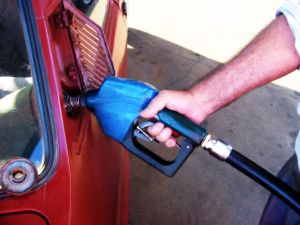Outlook for gasoline prices: Going lower
Published 2:48 pm Monday, July 14, 2014

- The price of gas is up this summer, but that doesn't mean you have to empty your wallet in order to hit the road.
Motorists have seen prices at the pump fall steadily since early April. After peaking around $3.93 a gallon, the national average price of self-serve regular has fallen to $3.54, as measured by AAA.
What’s behind the free-fall? It turns out we have something of an oil glut. Consumers around the world are buying less fuel while oil producers, including the U.S., have continued to pump oil.
A recent survey by Platts found oil production from OPEC nations rose 40,000 barrels per day to 31.75 million in May.
The highest since October 2008
The May production marks a rise from April’s output level of 31.71 million barrels a day and is the highest level since October 2008 when OPEC volumes averaged 32.26 million barrels. That’s when, you will remember, the economy went into a nose dive.
“The number that really matters is the jump from January to May this year, which shows that OPEC output rose from 30.87 million barrels a day in January to 31.75 million barrels a day last month,” said John Kingston, Platts global director of news. “This has occurred even as Iranian supplies were being squeezed by a drop in the number of customers willing to take its oil. We can now assume OPEC members at least will discuss at their upcoming meeting a possible paring of production. This scenario was almost impossible to fathom just a few months ago, as OPEC continues to surprise the world with its ability to put oil on to the market.”
In fact, there’s some dissension in the OPEC ranks over how much oil the cartel should be pumping. Iran and Venezuela, for example, accuse Saudi Arabia of undermining the price of oil by pumping too much of it.
Saudis think oil too expensive
But the Saudis, echoing many U.S. motorists’ sentiments, argue the price of oil is artificially high. Remember, prices began to spike earlier this year when oil investors believed there was a risk of a confrontation with Iran over nuclear issues leading to a supply disruption. The Saudis have argued that oil prices should be below $100 a barrel for the overall health of the global economy.
Sentiment in the oil market has turned “bearish,” meaning traders no longer think prices are headed higher, and are thus unwilling to bid up the price of crude. In addition to the lessened risk of conflict with Iran, there are worries about a slowdown in the global economy, brought on by Europe’s debt problems.
That leads economists like Joel Naroff, of Naroff Economic Advisers, to conclude that the price of just about everything the U.S. imports could get cheaper, or at least not go up in price.
Supply and demand
“Import prices are falling as everyone around the world is trying to sell into the one market where there is some demand, the U.S.,” Naroff said, “That means they are willing to take lower prices to sustain their sales.”
As a result, he says oil prices are down, further declines in gasoline prices are coming and the U.S. economy is not growing strongly enough for any firm to have much pricing power. At the same time, the value of the U.S. dollar is rising, meaning things that are purchased in dollars – like oil and gold – are getting cheaper.
That fact is underlined in the U.S. Labor Department’s Producer Price Index (PPI) for May, which took its biggest drop since 2009. The main factor in the decline? A 4.3 percent decline in the price of energy.
Will the trend last? Who knows? But for the rest of the summer, at least, consumers should enjoy falling prices at the pump.
Story provided by ConsumerAffairs.





